Mercedes EQS vs VW ID.7 – Performance, range & efficiency compared
Both models have their strengths – but which one suits you more?
Compare performance, efficiency, price and space directly: Mercedes EQS or VW ID.7?
Costs and Efficiency:
Price and efficiency are often the first things buyers look at. Here it becomes clear which model has the long-term edge – whether at the pump, the plug, or in purchase price.
VW ID.7 has a clearly advantage in terms of price – it starts at 46400 £, while the Mercedes EQS costs 93900 £. That’s a price difference of around 47525 £.
In terms of energy consumption, the advantage goes to the VW ID.7: with 13.60 kWh per 100 km, it’s noticeable more efficient than the Mercedes EQS with 16.50 kWh. That’s a difference of about 2.90 kWh.
As for range, the Mercedes EQS performs somewhat better – achieving up to 816 km, about 108 km more than the VW ID.7.
Engine and Performance:
Under the bonnet, it becomes clear which model is tuned for sportiness and which one takes the lead when you hit the accelerator.
When it comes to engine power, the Mercedes EQS has a clearly perceptible edge – offering 544 HP compared to 340 HP. That’s roughly 204 HP more horsepower.
In acceleration from 0 to 100 km/h, the Mercedes EQS is noticeable quicker – completing the sprint in 4.40 s, while the VW ID.7 takes 5.40 s. That’s about 1 s faster.
In terms of top speed, the Mercedes EQS performs somewhat better – reaching 210 km/h, while the VW ID.7 tops out at 180 km/h. The difference is around 30 km/h.
There’s also a difference in torque: Mercedes EQS pulls noticeable stronger with 858 Nm compared to 679 Nm. That’s about 179 Nm difference.
Space and Everyday Use:
Whether family car or daily driver – which one offers more room, flexibility and comfort?
Both vehicles offer seating for 5 people.
In curb weight, VW ID.7 is somewhat lighter – 2180 kg compared to 2545 kg. The difference is around 365 kg.
In terms of boot space, the Mercedes EQS offers somewhat more room – 610 L compared to 532 L. That’s a difference of about 78 L.
In maximum load capacity, the Mercedes EQS performs somewhat better – up to 1770 L, which is about 184 L more than the VW ID.7.
When it comes to payload, Mercedes EQS a bit takes the win – 565 kg compared to 465 kg. That’s a difference of about 100 kg.
Who comes out on top?
Overall, the Mercedes EQS shows itself to be is largely superior and secures the title of DriveDuel Champion.
It convinces with the more balanced overall package and proves to be the more versatile choice for everyday use.
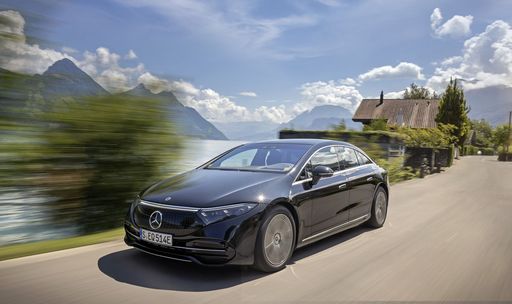
Mercedes EQS
Mercedes EQS
The Mercedes-Benz EQS redefines luxury in the realm of electric vehicles, combining exceptional comfort with cutting-edge technology. Its sleek and aerodynamic design is a testament to both elegance and efficiency, setting new standards for the brand. Inside, the EQS offers a serene and spacious cabin equipped with the latest advancements, ensuring a refined driving experience.
details @ group-media.mercedes-benz.com
@ group-media.mercedes-benz.com
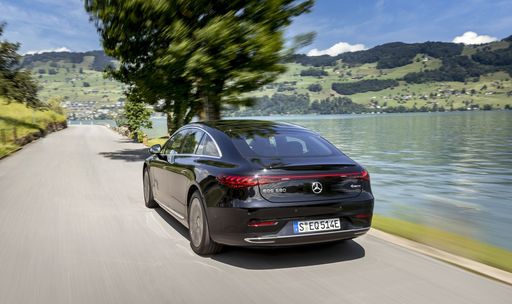 @ group-media.mercedes-benz.com
@ group-media.mercedes-benz.com
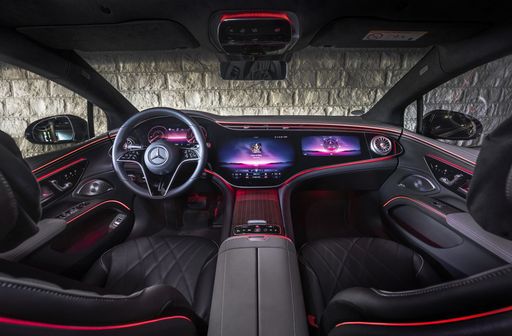 @ group-media.mercedes-benz.com
@ group-media.mercedes-benz.com
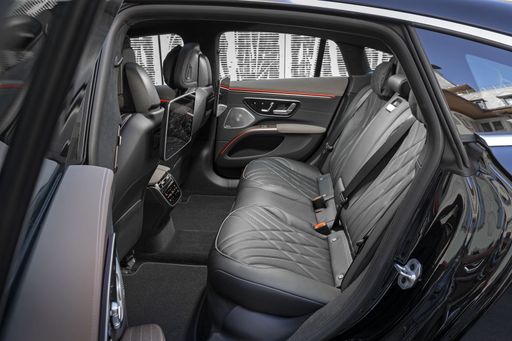 @ group-media.mercedes-benz.com
@ group-media.mercedes-benz.com
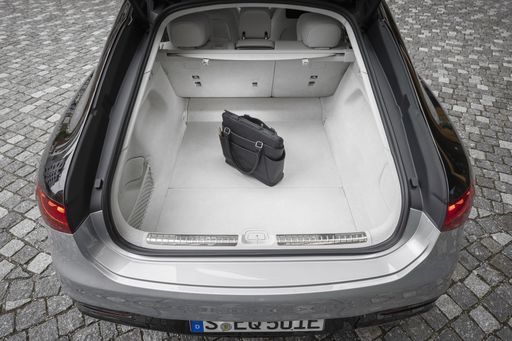 @ group-media.mercedes-benz.com
@ group-media.mercedes-benz.com
VW ID.7
The VW ID.7 represents a significant step forward in Volkswagen's electric vehicle lineup, offering an elegant design combined with advanced technology features. This electric saloon showcases a sleek aerodynamic profile, prioritising both performance and efficiency. Inside, drivers will appreciate the spacious and modern cabin, equipped with intuitive controls and connectivity features for a seamless driving experience.
details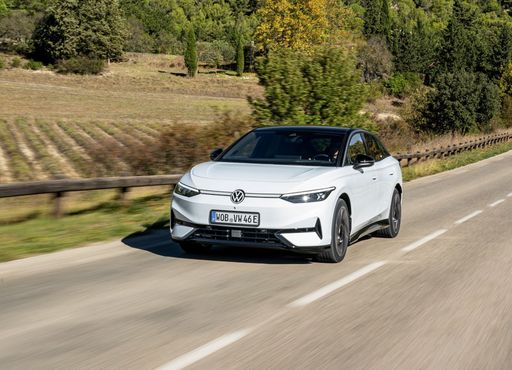 @ Volkswagen.de
@ Volkswagen.de
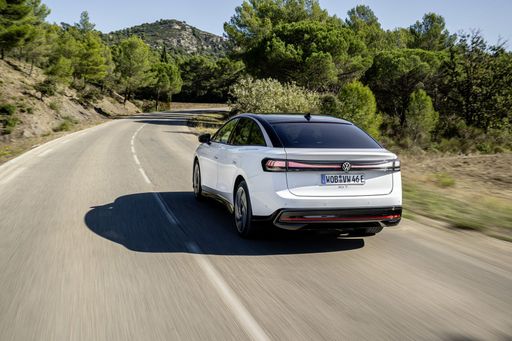 @ Volkswagen.de
@ Volkswagen.de
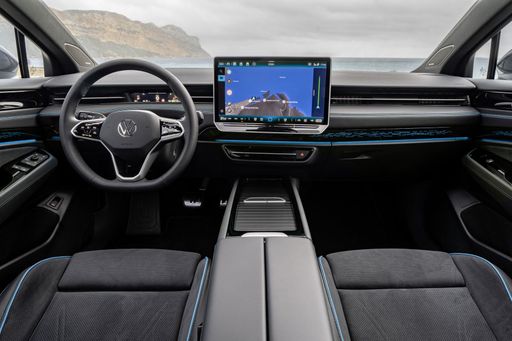 @ Volkswagen.de
@ Volkswagen.de
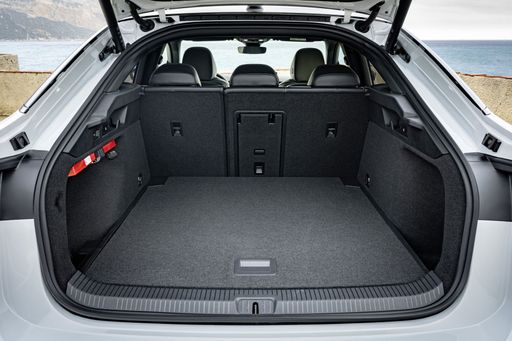 @ Volkswagen.de
@ Volkswagen.de

|

|
|
|
|
Costs and Consumption |
|
|---|---|
|
Price
93900 - 123500 £
|
Price
46400 - 54200 £
|
|
Consumption L/100km
-
|
Consumption L/100km
-
|
|
Consumption kWh/100km
16.5 - 17.2 kWh
|
Consumption kWh/100km
13.6 - 16.2 kWh
|
|
Electric Range
790 - 816 km
|
Electric Range
594 - 708 km
|
|
Battery Capacity
118 kWh
|
Battery Capacity
77 - 86 kWh
|
|
co2
0 g/km
|
co2
0 g/km
|
|
Fuel tank capacity
-
|
Fuel tank capacity
-
|
Dimensions and Body |
|
|---|---|
|
Body Type
Hatchback
|
Body Type
Hatchback
|
|
Seats
5
|
Seats
5
|
|
Doors
5
|
Doors
5
|
|
Curb weight
2545 - 2655 kg
|
Curb weight
2180 - 2325 kg
|
|
Trunk capacity
610 L
|
Trunk capacity
532 L
|
|
Length
5223 mm
|
Length
4961 mm
|
|
Width
1926 mm
|
Width
1862 mm
|
|
Height
1512 mm
|
Height
1535 - 1536 mm
|
|
Max trunk capacity
1770 L
|
Max trunk capacity
1586 L
|
|
Payload
550 - 565 kg
|
Payload
460 - 465 kg
|
Engine and Performance |
|
|---|---|
|
Engine Type
Electric
|
Engine Type
Electric
|
|
Transmission
Automatic
|
Transmission
Automatic
|
|
Transmission Detail
Reduction Gearbox
|
Transmission Detail
Reduction Gearbox
|
|
Drive Type
All-Wheel Drive, Rear-Wheel Drive
|
Drive Type
Rear-Wheel Drive, All-Wheel Drive
|
|
Power HP
360 - 544 HP
|
Power HP
286 - 340 HP
|
|
Acceleration 0-100km/h
4.4 - 6.2 s
|
Acceleration 0-100km/h
5.4 - 6.6 s
|
|
Max Speed
210 km/h
|
Max Speed
180 km/h
|
|
Torque
568 - 858 Nm
|
Torque
545 - 679 Nm
|
|
Number of Cylinders
-
|
Number of Cylinders
-
|
|
Power kW
265 - 400 kW
|
Power kW
210 - 250 kW
|
|
Engine capacity
-
|
Engine capacity
-
|
General |
|
|---|---|
|
Model Year
2024
|
Model Year
2023 - 2024
|
|
CO2 Efficiency Class
A
|
CO2 Efficiency Class
A
|
|
Brand
Mercedes-Benz
|
Brand
VW
|
What drivetrain options does the Mercedes EQS have?
Available configurations include All-Wheel Drive or Rear-Wheel Drive.
The prices and data displayed are estimates based on German list prices and may vary by country. This information is not legally binding.
